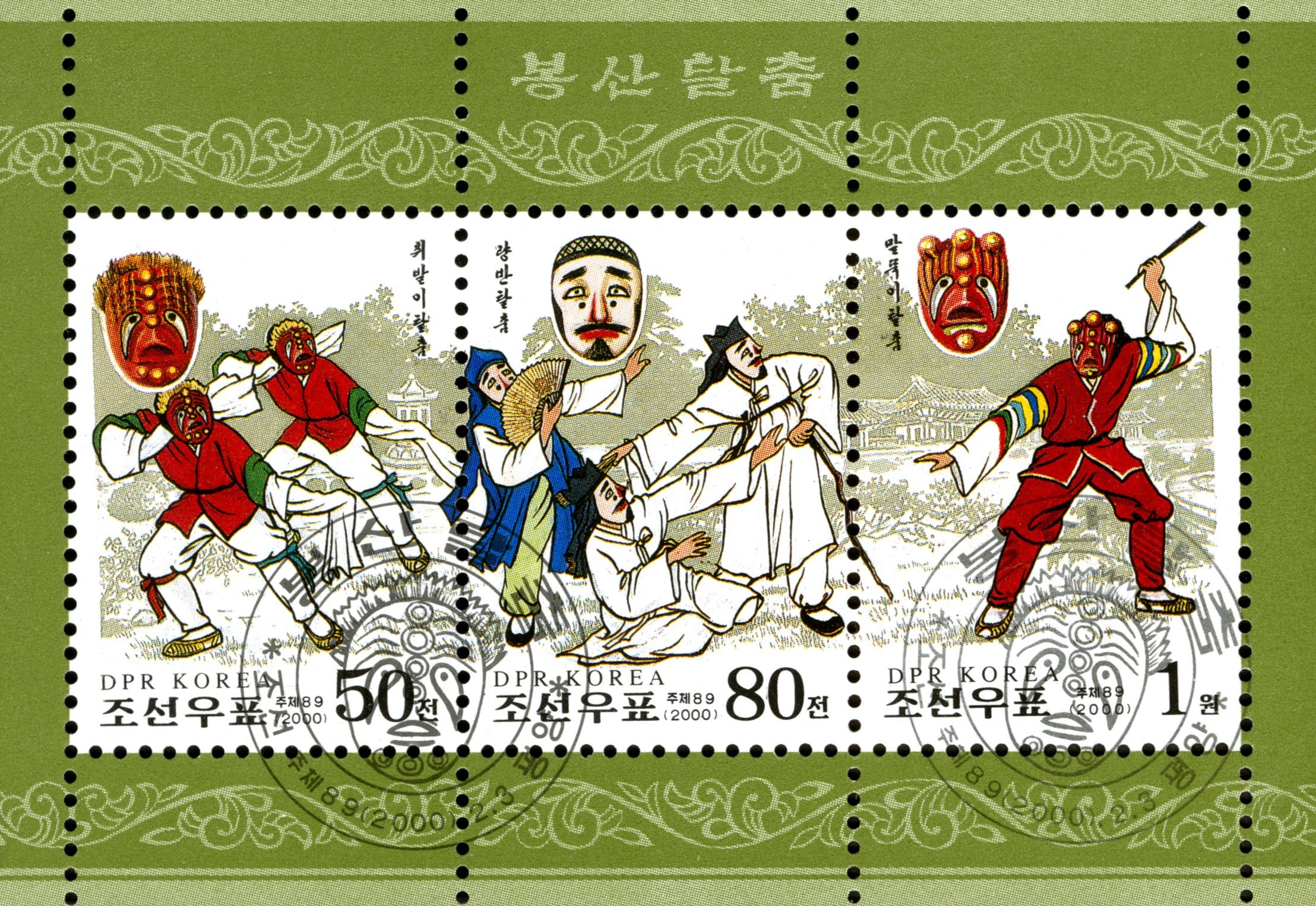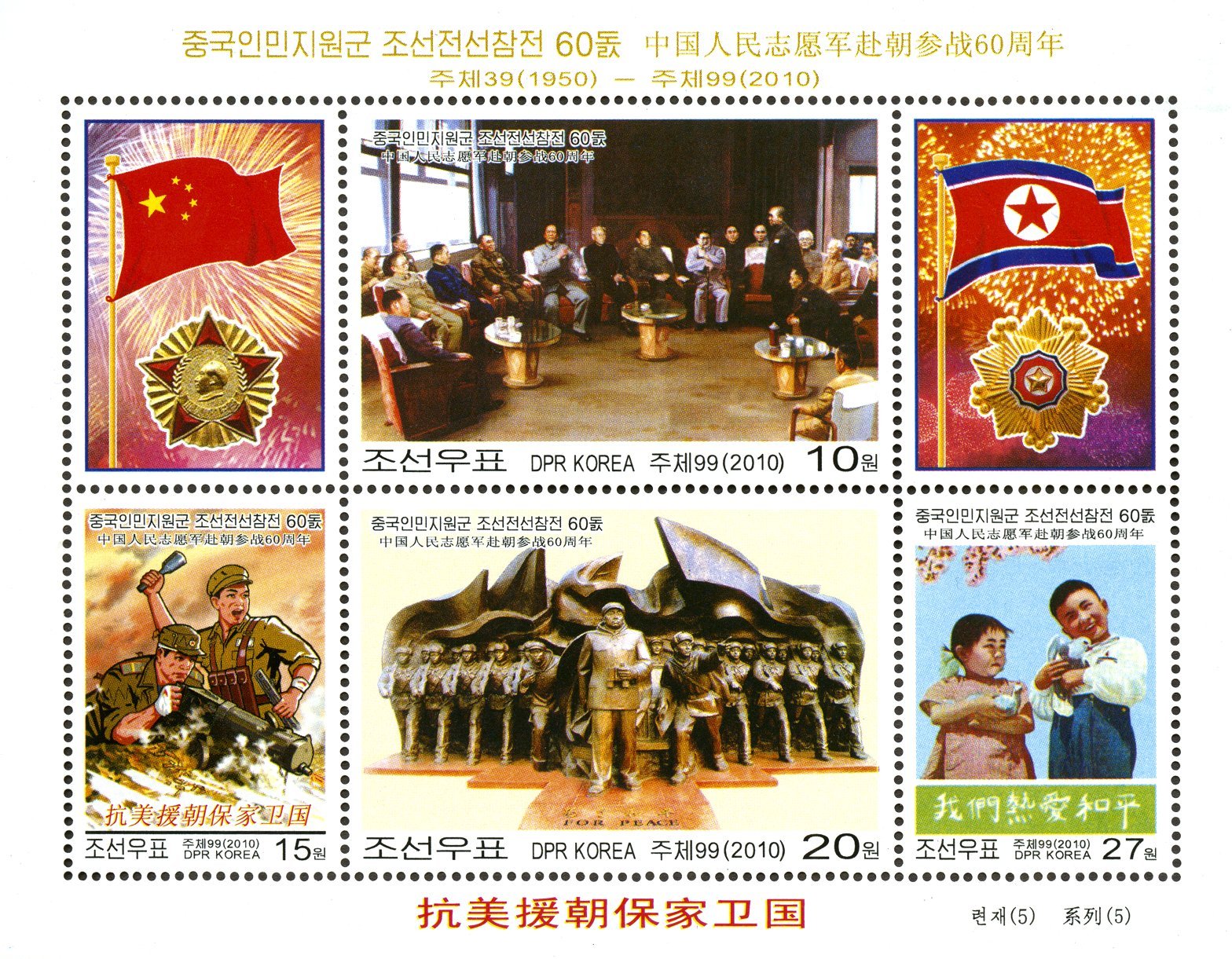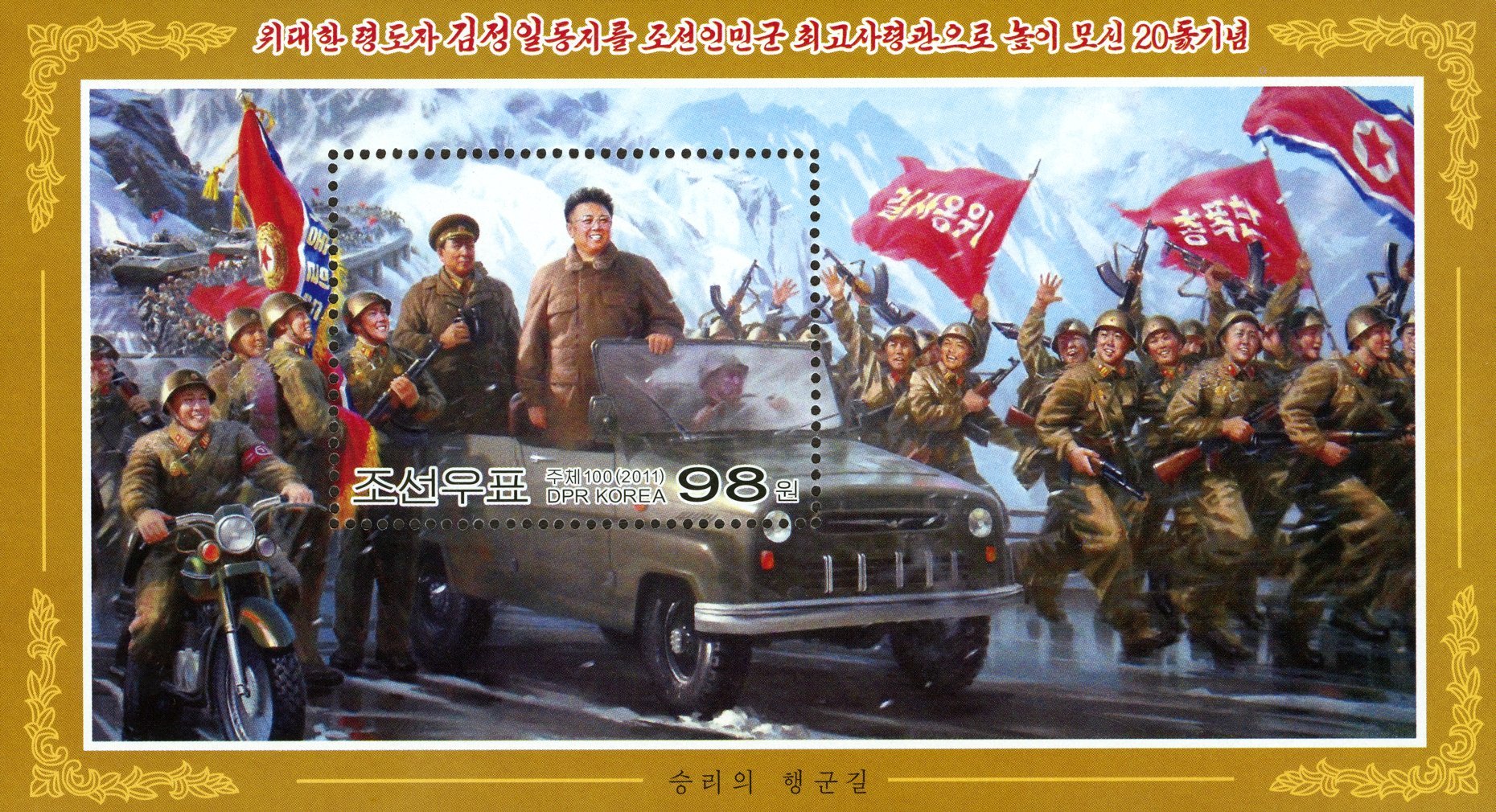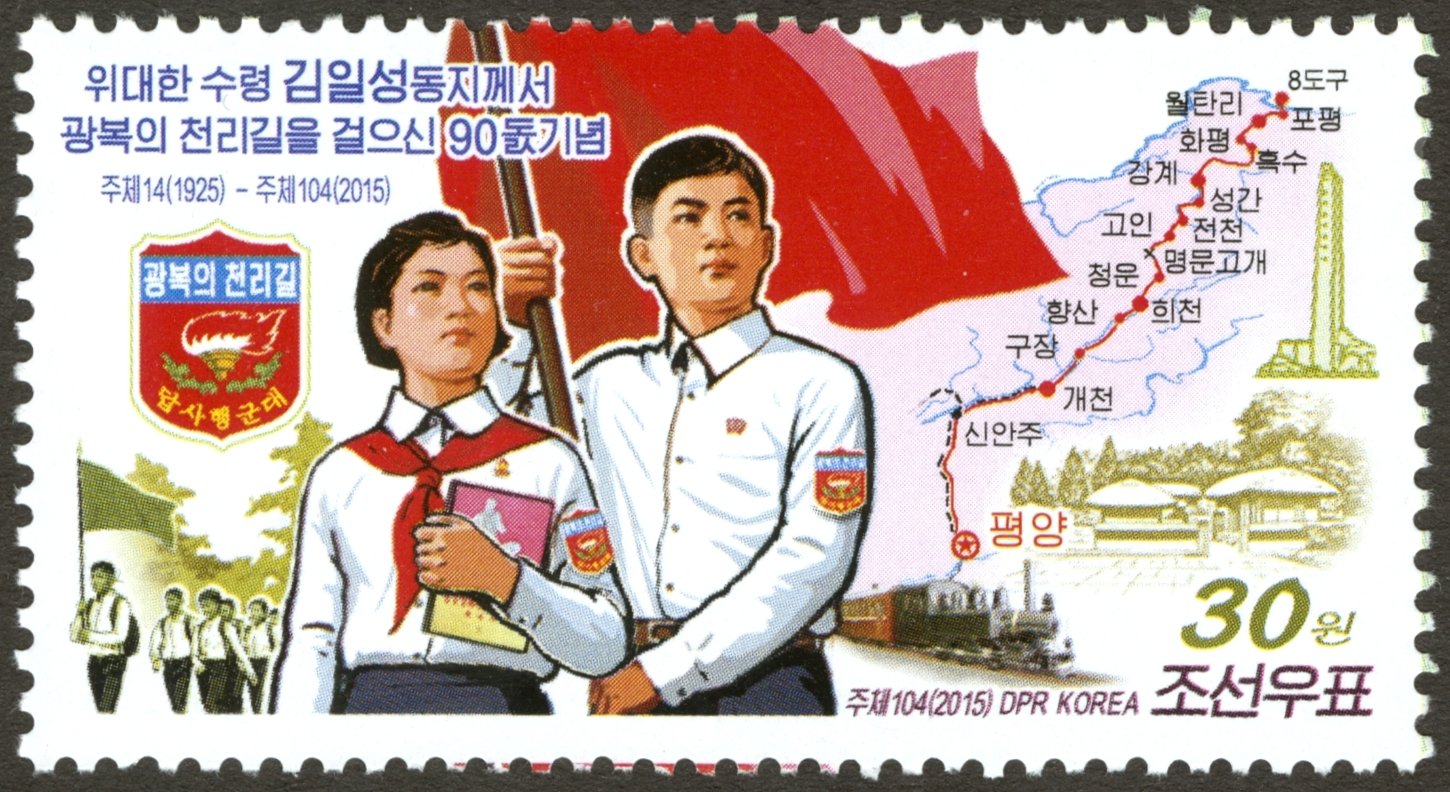Stamps: Politics, History, Culture
Published in Juche 89 (2000) / by Korea Stamp Corporation
봉산 탈춤 / The traditional Korean Bongsan masked dance / Pongsan t'alch'um
Designated by South Korea as the 17th Important Intangible Cultural Property, the Bongsan Mask Dance originated in Hwanghae-do, a province located northwest of the DMZ. Practiced and passed down as a form of folk entertainment between commoners, the Bongsan Masked Dance allowed its disguised performers to criticize the corrupt social hierarchies of the late Joseon era through parody and satire. In the center-panel stamp, we see three noble brothers (middle-panel) at the mercy of his servant (right panel). Other characters from the drama also appear, such as two drunkards (left-panel).
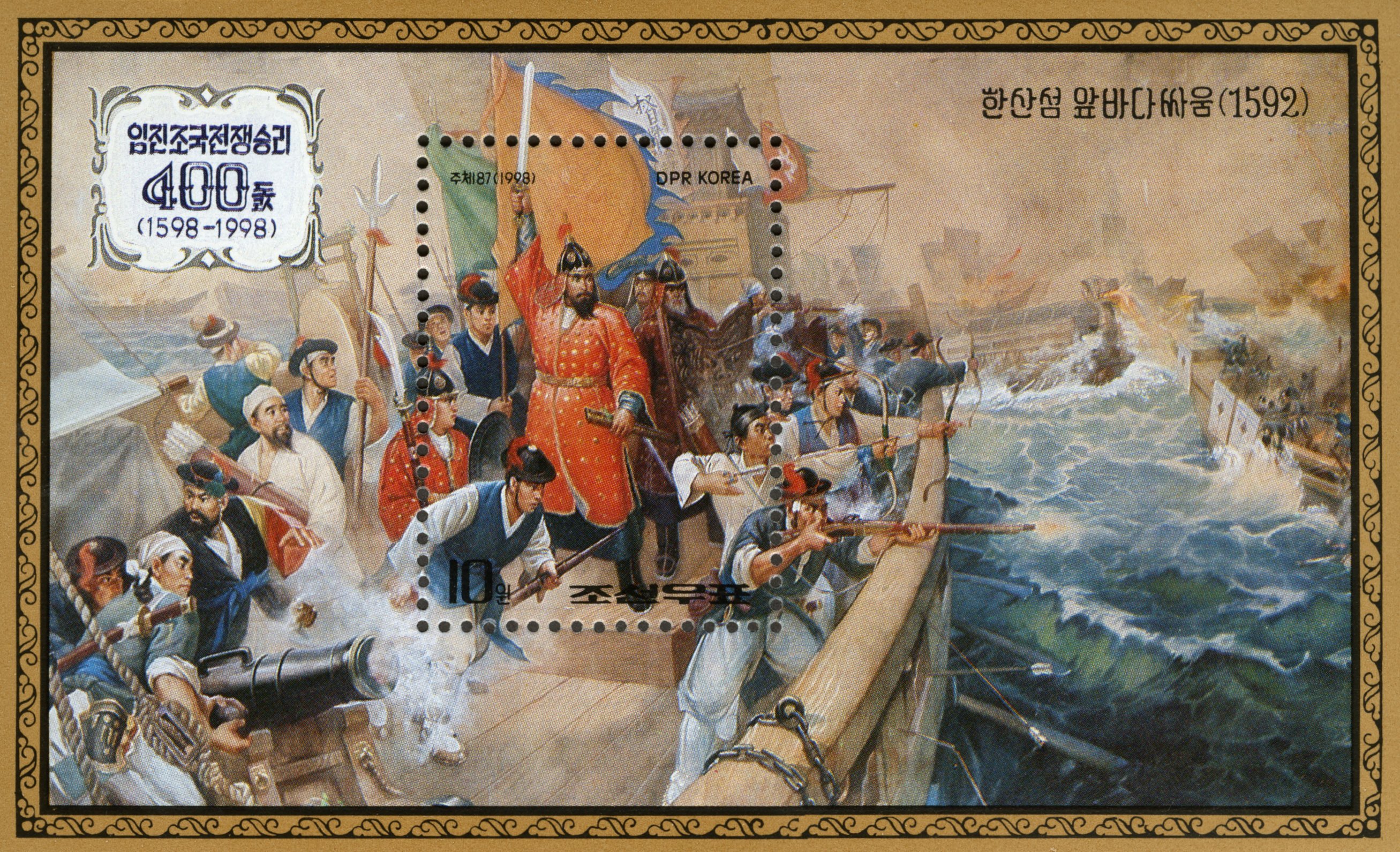
Published in Juche 87 (1998) / by Korea Stamp Corporation
한산섬 앞 바다 싸움 / Battle of Hansan Island / Hansansŏm ap pada ssaum
The stamp commemorates the 400th anniversary of Korea’s victory over Japan in the Imjin War (1592-1598), which took place when the Japanese warlord Toyotomi Hideyoshi invaded the Korean peninsula with his samurai armies. Framed within the stamp’s borders in a bright red robe and sword pointed at the sky is the heroic figure of Admiral Yi Sun-Sin (1545-1598), portrayed amidst the fighting on the Battle of Hansan Island. Among Yi’s most notable achievements, victory in this battle enabled Joseon to maintain control over the southern provinces of Jeolla-do and Chungcheong-do, known as Korea’s breadbasket; it also isolated the Japanese armies already on the Korean mainland from reconnecting with their main route of support and communication.
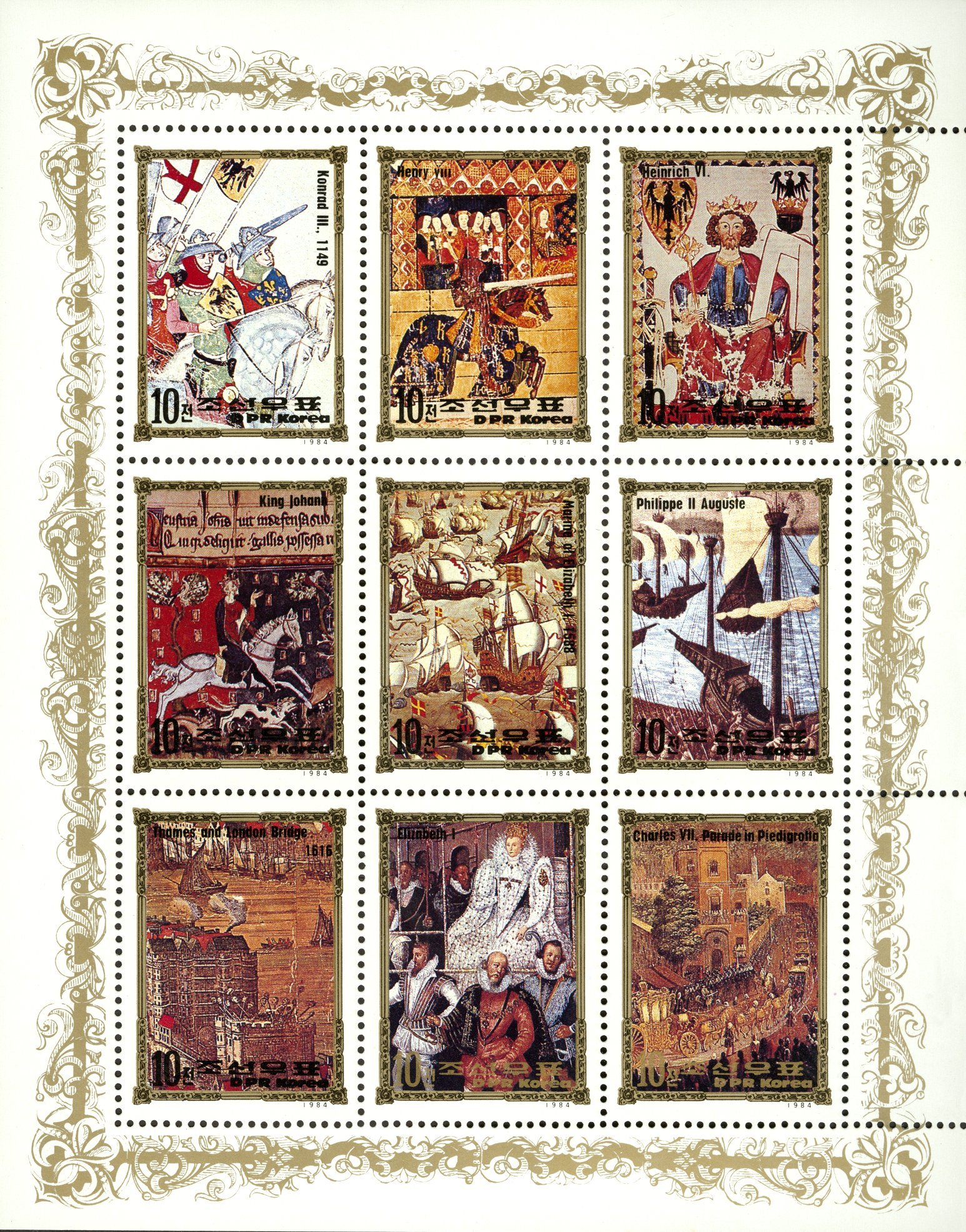
Published in Juche 73 (1984) / by Korea Stamp Corporation
유럽 명화들 / Masterpieces of European paintings / Yurŏp myŏnghwadŭl
Among the foreign themes appearing on North Korean stamps (international relations, Chinese modern history, North-South unification, etc.) European paintings feature prominently. This stamp sheet, constructed with nine cropped images, revolves around recreated paintings of various figures of royalty from the Middle Ages up through the Renaissance.
Published in Juche 99 (2010) / by Korea Stamp Corporation
중국 인민 지원군 조선 전선 참전 60돐 / The 60th anniversary of the Chinese People’s Volunteer Army (CPV)'s entrance into the Korean War / Chungguk Inmin Chiwŏn'gun Chosŏn chŏnsŏn ch'amjŏn 60-tol
The Chinese People's Volunteer Army (CPV) entered the Korean War in 1950 to reinforce the Democratic People's Republic of Korea (DPRK). In 2010, the Korea Stamp Corporation in Pyongyang issued stamps commemorating the 60th anniversary of the CPV's participation on the front lines. This six-stamp sheet includes an image of the Chinese CPV monument built in Dandong near the North-China border (bottom center), an oil-painting of the Chinese Communist Party caucus to discuss participation in the Korean War (top center), soldiers from both sides in battle together (bottom left), two children holding pigeons to symbolize peace (bottom right) and two medals of honor for soldiers of both nations displayed under their respective flags (top left and right).
Published in Juche 100 (2011) / by Korea Stamp Corporation
위대한 령도자 김 정일 동지 를 조선 인민군 최고 사령관 으로 높이 모신 20돐 기념 / The 20th anniversary commemoration of Great Leader Comrade Kim Jong-il's elevation to Supreme Commander of the Korean People’s Army (KPA) / Widaehan yŏngdoja Kim Chŏng-Il Tongji rŭl Chosŏn Inmin'gun Ch'oego Saryŏnggwan ŭro nop'i mosin 20-tol kinyŏm
Upon the passing of Kim Il-sung on July 8th, 1994, his first born son Kim Jong-il (1941-2011) succeeded him as Supreme Leader. The stamp is set on December 24, 1991 when Kim Jong-il took over as supreme commander of the Korean People's Army (KPA), a position previously held by his father for 40 years. Kim Jong-il appears here standing in a jeep as it passes a parade of soldiers whose celebration winds endlessly into the mountainous background.
Published in Juche 104 (2015) / by Korea Stamp Corporation
위대한 수령 김 일성 동지 께서 광복 의 천리 길 을 걸으신 90돐 기념 / The 90th anniversary of the One Thousand-ri Journey for National Liberation / Widaehan suryŏng Kim Il-sŏng Tongji kkesŏ Kwangbok ŭi Chʻŏlli Kil ŭl kŏrŭsin 90-tol kinyŏm
This stamp commemorates the 90th anniversary of an event known as the One Thousand-ri Journey for National Liberation. On January 22, 1925, a fourteen year old Kim Il-sung left his home in Mangyongdae (near Pyongyang) and went all the way to northeastern China to join the anti-Japanese armed struggle. Every March, North Korean students embark on the same thousand-li (about 393 km) expedition. In the foreground of this image, two young students with “exploration march” patches on crisp white uniforms hold a red flag. Behind them is the mapped route of the One Thousand-ri Journey, leading from Pyongyang through Gaecheon, Hyangsan, Ganggye and Hwapyeong to the northernmost city of Pophyong. The small graphics to the right of the map depict landmarks such as Kim Il-sung’s old home and the Monument to the Victorious Battle of the Musan Area (both of which are featured elsewhere in the Collection).
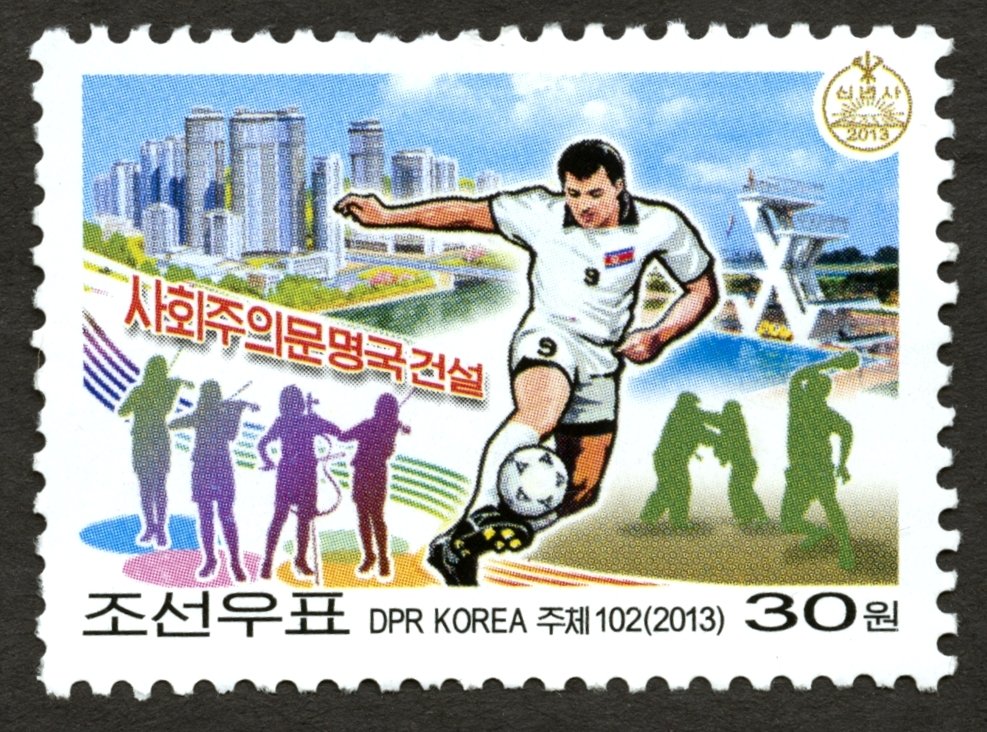
Published in Juche 102 (2013) / by Korea Stamp Corporation
사회주의 문명국 건설 / Building of a civilized socialist nation / Sahoejuŭi munmyŏngguk kŏnsŏl
In a joint New Year editorial from 2012, Kim Jong-un proposed a social and cultural vision referred to as the "construction of a civilized socialist nation.” The term “civilized socialist nation” was one of the keywords that emerged during the Kim Jong-un era. In other words, this was a vision of "a country where socialist cultures are fully developed, a country where people have attained high levels of creativity and cultural, [where they] create and enjoy the best civilization at the highest level." The fields of focus include education, health, physical education, literature and art, socialist ethnic culture, moral discipline and cultural and sentimental life. This stamp features a national soccer player in action; behind him are smaller graphics showing of Pyongyang’s modernized skyline (top left), a swimming pool (top right) and the silhouettes of a string ensemble (bottom left) and athletes of other sports (bottom right).
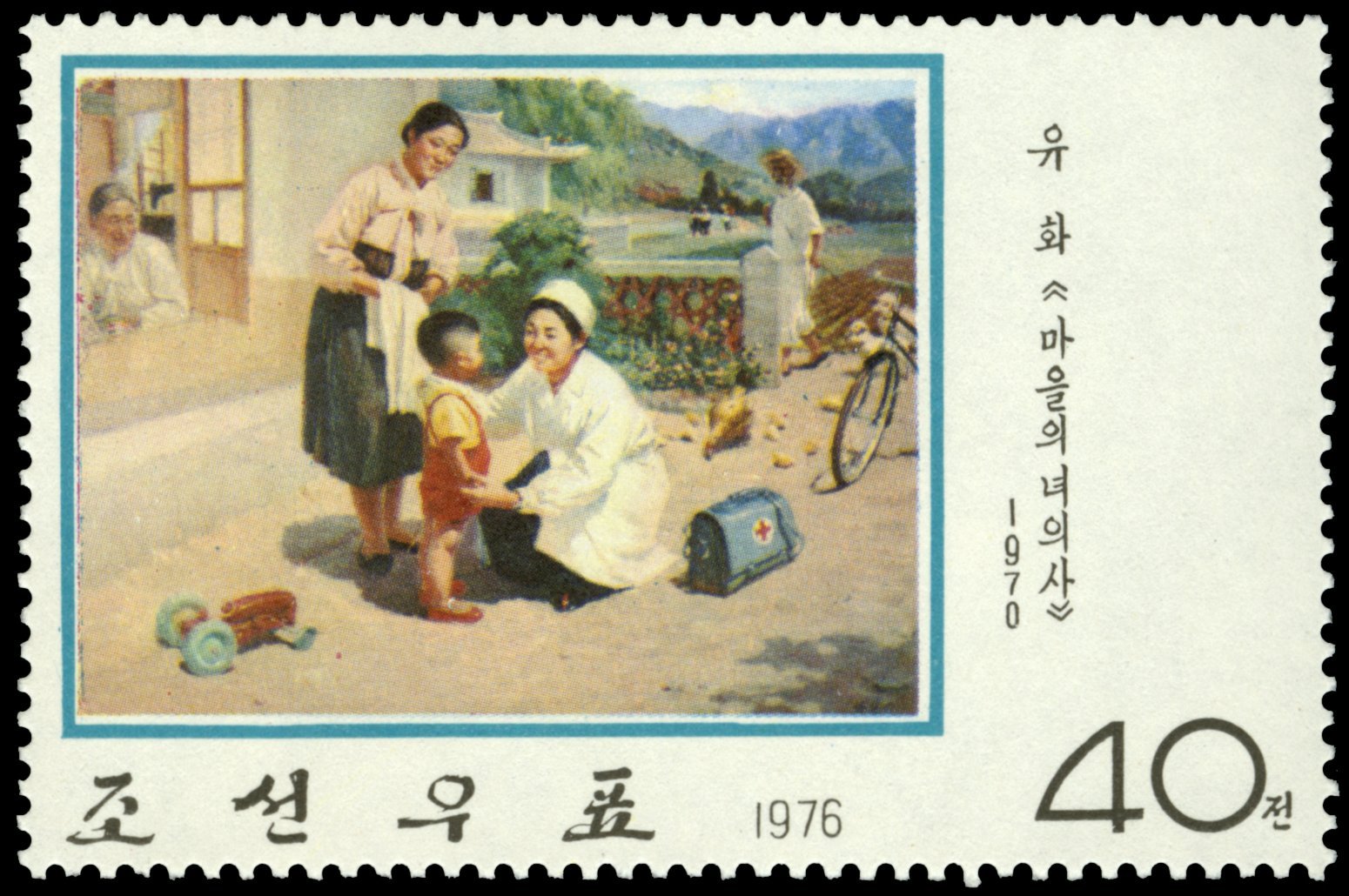
Published in Juche 65 (1976) / by Korea Stamp Corporation
마을 의 녀의사 / Woman doctor in a village / Maŭl ŭi yŏŭisa
North Korean oil paintings have developed a socialist realist style associated with the Soviet Union in the 1950s, though the subjects depicted are more evocative of the country’s own national sensibilities and sentiments. In this painting from the 1970s everyday people are portrayed forming communal bonds; here a white-suited nurse kneels to talk with a small boy as the boy's mother looks on. In the background is an idyllic landscape of lakes and mountains.
